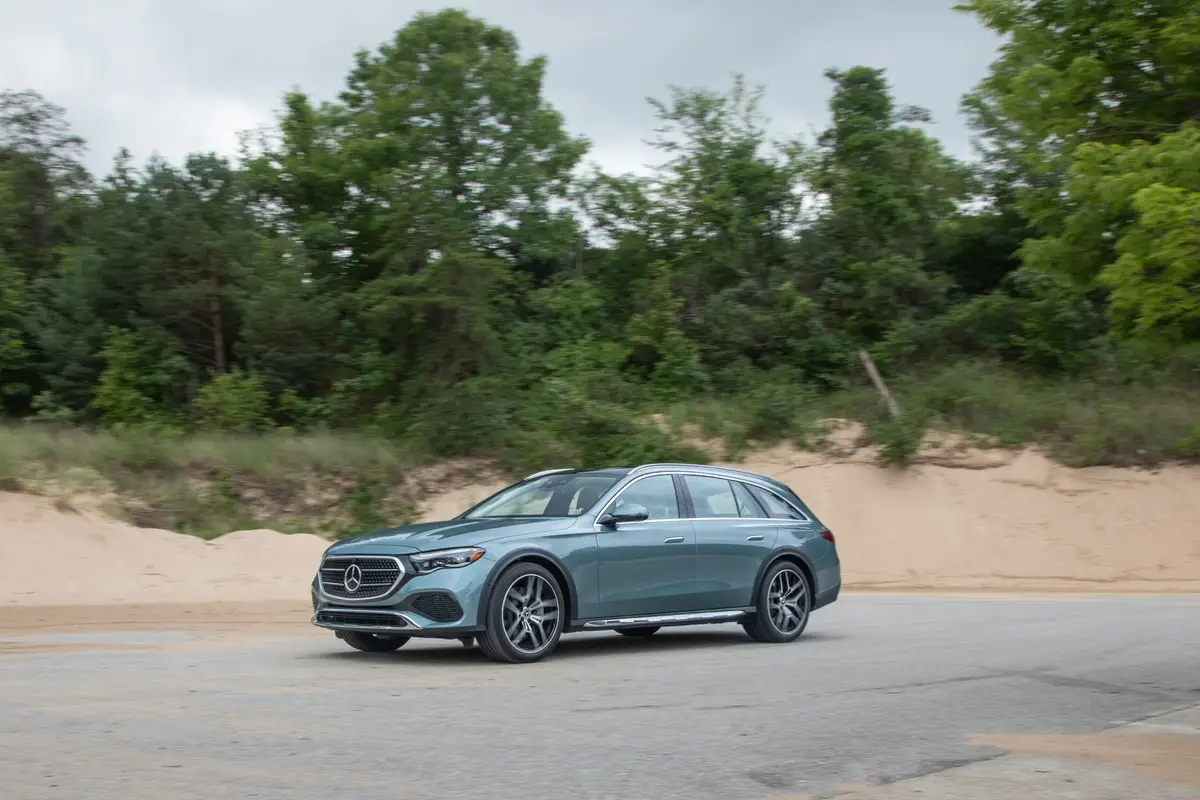Star-Telegram.com's view
Volkswagen’s newest minivan is now on the market – you know, the one promoted by the silly Brooke Shields TV commercials in which she suggests that the women in the ads are having babies just so they can buy a van.
To a number, everyone I know who has seen the ads has groaned over them, including some in the auto industry already concerned about the stigma minivans have developed because of their mom-mobile image.
As bad as those ads are, people at least are noticing them, which I suppose is a good thing. As the old saying goes, there is no such thing as bad publicity.
Volkswagen rolled out the Routan, its first minivan for North America since discontinuing the Eurovan in 2003, at last year’s Chicago auto show, and it went on sale this past fall.
It’s not a Volkswagen product, however. The leading minivan maker, Chrysler, assembles the Routan at its plant in Windsor, Ontario, in a shared-platform arrangement that is common in today’s automotive manufacturing environment.
Instead of developing a van of its own – a process that could cost $1 billion or more – Volkswagen chose an alliance with Chrysler, which likes to bill itself as the inventor of the minivan.
But it actually was Volkswagen that introduced the minivan concept to U.S. consumers with its VW Microbus of the middle 20th century, even though Chrysler is the automaker that developed and made a mass-market success of the modern minivan, beginning with the introduction of the 1984 Dodge Caravan.
Never a great seller, the VW Bus nevertheless is a well-known icon of American culture, as it became the symbol of the hippie/peace/free-love movement of the ’60s and ’70s.
The 2009 Routan is nothing like the original Microbus, however. It’s quite in the same modern vein as the current crop of Dodge Grand Caravan and Chrysler Town & Country minivans, using the same underpinnings.
It does have some of its own unique exterior and interior styling elements, however. And Volkswagen insists that the chassis was “retuned to European driving standards.”
Our tester, the midlevel SE version (base price $29,600 plus $690 freight), performed just as though it were one of the Chrysler vans, though, and that’s not a bad thing at all. Chrysler has been selling hundreds of thousands of its minivans each year for the past 25 years for good reason – its vans (at least the newer ones) are quite good products.
Although the Routan is not a real VW, it was added to the company’s U.S. lineup to help Volkswagen of America achieve its goal of moving from its current roll as a niche vehicle marketer here, with sales of fewer than 230,000 vehicles last year, to more than 800,000 a year by 2018.
It can be argued, however, that the Routan isn’t quite as good as the current Grand Caravan or Town & Country, despite prices that are somewhat above those of the Grand Caravan.
Routan base prices range from $25,200-$38,500, while Grand Caravan’s run from $24,480-$28,575. The Routan apparently is positioned more like the Town & Country, which ranges from $26,680-$36,780, or the leading import minivan, the Honda Odyssey, whose prices go from $26,355-$41,105.
Chrysler did not opt to share all of the special features of its newest minivans with Volkswagen, however. The Routan, for instance, does not offer the swiveling middle-row seats that the Chrysler vans offer, which allow the two rear seats to face each other.
Volkswagen, though, not Chrysler, pioneered that arrangement. The arrangement of two rear seats facing each other and a table in the middle was offered in many of the early VW Bus models, and there were VW Microbus campers that even had beds, a pop-up top, a refrigerator and a cook stove.
Unlike the early VW Microbus models – also known as Transporters or Type 2 Volkswagens – the new Chrysler-built models do not have a rear engine. As with the Eurovan and, of course, the Chrysler/Dodge minivans, the engine is up front.
Powering my SE tester was a 3.8-liter, 197-horsepower, V-6 with 230 foot-pounds of torque. This engine also is used in the base S model, but the top-of-the-line SEL model comes with a 4.0-liter, 251-horsepower V-6. Both engines are made by Chrysler, not Volkswagen.
The engines are connected to a six-speed automatic transmission. The lower-powered engine actually has the worse fuel economy than the other one, however. Our tester was EPA rated at 16 mpg city/23 highway, while the 4.0-liter engine has ratings of 17 city/25 highway.
There is room for up to seven people. It has a pair of bucket seats in the front and middle rows, and a three-person bench in the rear. That rear seat can be flipped over to face to the rear for a tailgate party, so people can sit there with their legs dangling out the back – but not while the vehicle is moving.
Power windows/heated outside mirrors/door locks with remote are standard on the Routan SE, along with antilock brakes, electronic stability control, three-zone manual air conditioning, eight-way power driver’s seat, four-way manual front passenger seat, AM/FM/six-disc DVD-CD player with auxiliary jack, leather steering wheel with audio controls, dual front glove boxes, second- and third-row retractable sunshades, and power rear quarter windows.
Safety features include front seat-mounted side air bags and side-curtain air bags for all three rows, as well as a tire-pressure monitoring system (useful during our test driving – see below), and child-seat LATCH anchors.
There were power sliding passenger doors on both sides, but I was disappointed that the heavy, one-piece rear hatch still had to be manually operated. Power would have been nice there, as well – particularly because when the hatch is open all the way, it’s hard for shorter people – especially the women in my family – to reach.
There was another issue with the vehicle, as well – trying to get to the spare tire after having to pull off on a busy freeway with a flat tire. Luckily, I was close to an exit where there was a tire store when the tire went flat.
But even there, it took the employees at the store about a half-hour to figure out how to get the temporary spare out from under the middle of the vehicle – even using the owner’s manual.
Because women are the primary operators of minivans, and VW obviously is pitching this vehicle to young women with small children, the Routan should be fitted with run-flat tires. At the very least, the spare should be easily accessible.
The only options on our tester were a “trim pack” ($1,985), which added a sunroof, power-adjustable pedals, black roof rails and a self-adjusting rear suspension; and heated front seats/remote starting ($445).
Total sticker was $32,720, including freight and options.
The automotive columns of G. Chambers Williams III have appeared regularly in the Star-Telegram since 1995. Contact him at 210-250-3236; chambers@star-telegram.com.
Latest news



